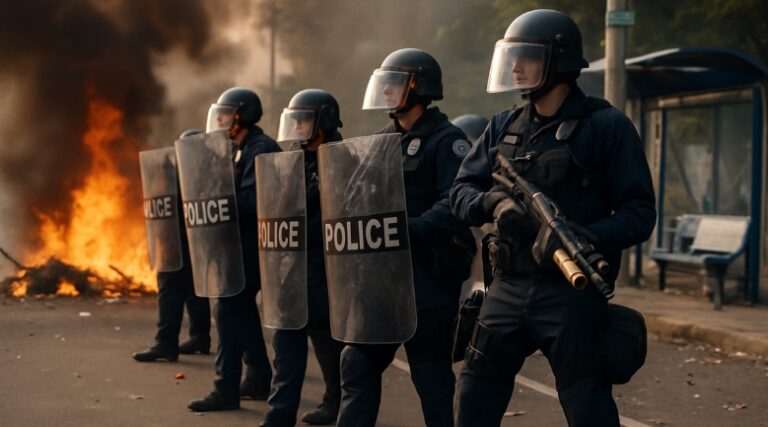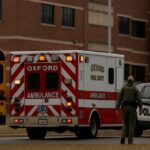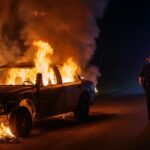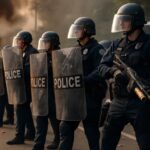On June 8, 2025, Los Angeles police officers fired over 1,000 projectiles at immigration protesters in a single day, marking one of the most intensive uses of crowd control weapons in recent memory.
The incident involved 584 officers, who were responding to approximately 6,000 demonstrators protesting ICE raids. It resulted in a slew of documented injuries and sparked national debate about police tactics. Naturally, this case’s impact is felt far beyond LA’s borders: it highlights the ongoing tension between maintaining public safety and protecting constitutional rights. The way this scale tips will affect officer safety, public trust, and the effectiveness of law enforcement nationwide.
What Happened in LA?
Between June 6th and June 14th of 2025, the LAPD deployed an unprecedented volume of crowd control weapons against protesters.
On June 8 alone, officers fired 1,040 projectiles, including 20 rounds of CS tear gas, at protesters who had blocked freeways and set vehicles on fire. The scale of the protests was massive: 584 officers responded to crowds of about 6,000 people, with six reported injuries from projectiles.
Human Rights Watch condemned these actions as “excessive force and deliberate brutality,” documenting 65 cases of individuals injured by law enforcement across multiple agencies. According to the organization, these injuries indicate “clear violations of international human rights law”.
How Safe Are “Non-Lethal” Weapons?
At first glance, it’s easy to treat these figures with disbelief: by all accounts, the LAPD never shot at protesters and limited their interventions to fully sanctioned non-lethal weapons.
Unfortunately, non-lethal is not equal to harmless. Wired Magazine recently published a full-length analysis of so-called “nonlethal” weapons, such as tear gas launchers, kinetic impact projectiles, and flash-bang grenades. According to their researchers, these weapons can cause severe injuries, including broken bones, concussions, eye damage, and, in documented cases, amputated fingers. The “less-lethal” designation creates dangerous misconceptions, as these weapons can cause permanent harm when misused.
With that said, officers using non-lethal weapons rarely mean lasting harm. Instead, these result from split-second decisions: When faced with crowds throwing rocks, Molotov cocktails, and concrete chunks, officers must rapidly assess appropriate force levels.
Here, officers are often betrayed by the critical gaps between theoretical training and chaotic real-world conditions. These often lead to problematic outcomes, especially when clear de-escalation protocols aren’t followed or when accusations of “indiscriminate fire” arise.
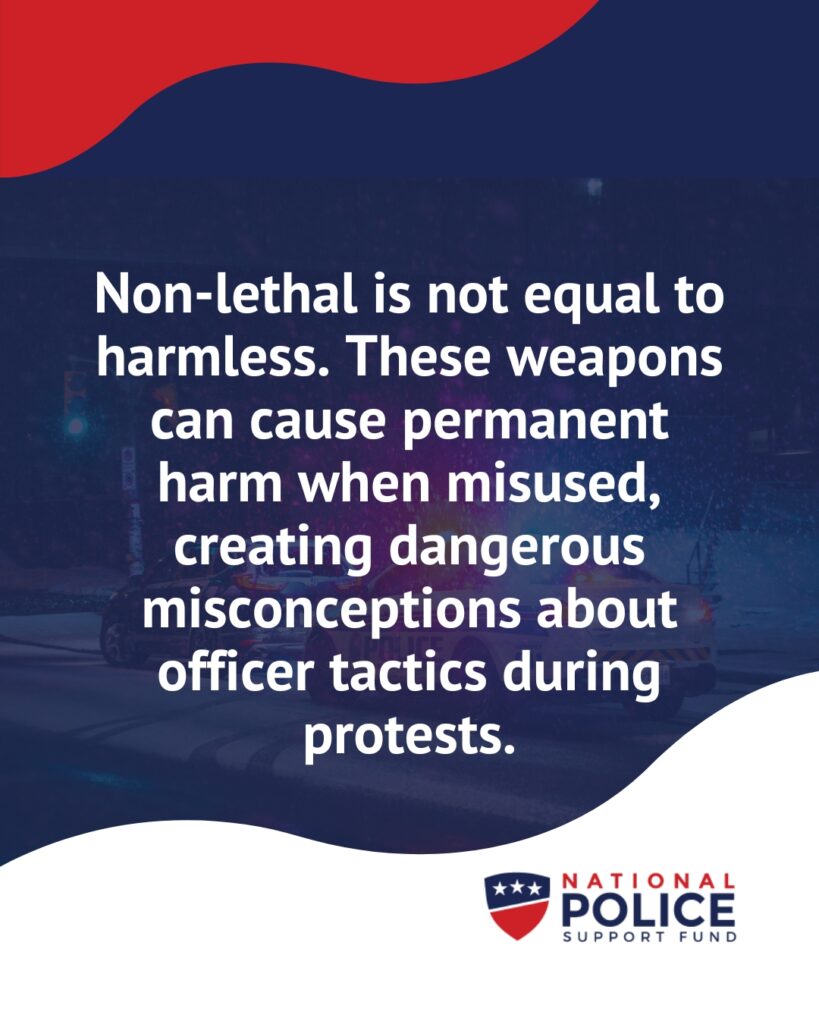
Financial and Political Fallout
Following these events, the Los Angeles Police Department could now face millions in lawsuit payouts, similar to the debates around Alabama’s bail reform.
In similar cases in the past, individuals received $375,000 and $1.5 million for rubber bullet injuries. With over 280 people contacting the ACLU about protest injuries, these costs add up quickly and may even jeopardize budget allocations for the coming year. An unfavorable ruling may require diverting money from officer resources, training, and personnel development.
However, an overly lenient outcome could also backfire. Accountability serves long-term interests. While immediate financial costs are significant, the perception of impunity could prove costlier over time. When communities lose faith in police legitimacy, officers face increased hostility, reduced cooperation in investigations, and greater personal safety risks. Balanced accountability, which holds departments responsible while supporting individual officers who operate within proper protocols, can enhance officer safety by maintaining public trust.
The National Debate
LA’s response reflects broader national struggles with protest policing, much like the high-risk decisions officers face in Georgia police pursuits. Police Departments in Portland, Minneapolis, and other cities have faced similar scrutiny, especially after mass demonstrations. This pattern suggests systemic challenges rather than isolated incidents, with media coverage often amplifying both concerns about excessive force and risks to officer safety.
Media portrayal significantly influences public perception, sometimes creating unfair generalizations about officer conduct while underemphasizing the complex, dangerous situations officers face. For example, an X post showing an Australian journalist being shot with a rubber bullet became a powerful symbol. Still, similar footage showing protesters throwing concrete and Molotov cocktails received less prominent coverage. This imbalanced narrative can erode public support for legitimate police work while failing to address underlying policy problems.
The Officer’s Perspective
Volatile protests frequently place officers in impossible positions. The LA protests involved genuine threats, including concrete debris thrown from overpasses, Molotov cocktails, and blocked emergency routes. Officers must protect public safety while knowing that any use of force will be subject to intense scrutiny. The psychological toll is substantial: 52 officers required medical treatment during the LA protests, while simultaneously dealing with criticism and potential legal liability for their response tactics.
This creates a dangerous cycle, driving both existing and prospective officers away from the profession. When officers feel unsupported, departments struggle to attract quality candidates, which can lead to lower standards and reduced training effectiveness. However, if public trust erodes completely, officers face increased danger as community cooperation disappears and hostility grows.
Importantly, individual officers often bear the worst of criticism for decisions made by command staff. While street officers make split-second choices, the policies, training, and strategic decisions that shape their options come from leadership. Proper accountability must address both individual actions and systemic failures at the command level.
National Police Support Fund Perspective & Conclusion
The LA protests demonstrate why balanced accountability matters for both public safety and officer effectiveness. Officers need clear, legally sound policies and robust legal protection when following proper protocols.
But it doesn’t end here. Officers also need leadership that prioritizes de-escalation and provides adequate training for complex scenarios. This requires supporting officer safety and authority while ensuring that command decisions reflect best practices and legal requirements. This is essential for modern policing in 2025, and if we want to maintain both public trust and officer effectiveness.

